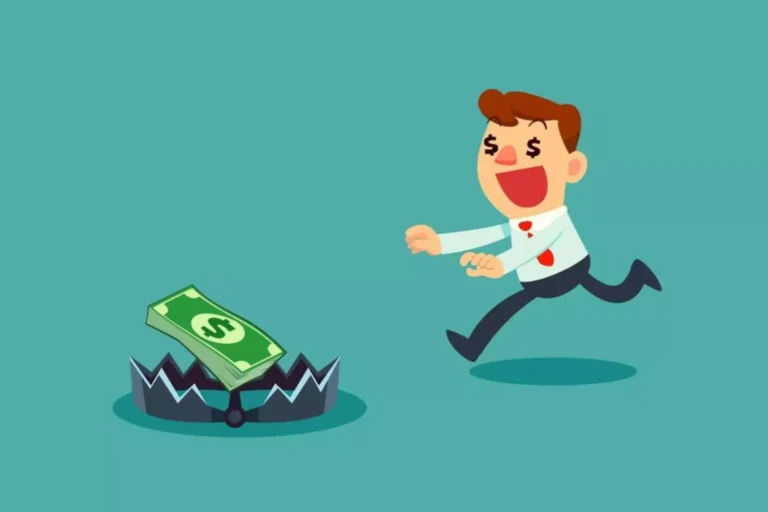Depending on the cryptocurrency’s underlying protocol, burning can affect various aspects, from transaction prioritization to consensus mechanisms. This level of transparency and verifiability adds an element of trust. It ensures that projects or entities cannot make false claims about token burns without the evidence what does burning mean in crypto on the blockchain. In the world of cryptocurrency, “burning” a token means to purposefully take that token out of circulation, often by sending it to a cryptocurrency wallet to which no-one has access. However, it is not advisable for individual investors to burn their own tokens as the coins will be permanently lost.

There are several purposes for burning coins, and much of it is to do with the stability of a coin’s price or the coin itself, in the case of a crypto upgrade. The Ethereum upgrade from earlier this year is a great example of this. Coin burning gets rid of some assets in circulation — so no access or trading. However, you may be wondering why anyone would “burn” an asset that could be of value? Additionally, crypto giant Binance has been burning millions of its native token, Binance Coin. In October 2021 alone, the company burned over 600 million dollars worth of BNB.
How did coin burning begin?
This artificial scarcity can, in turn, drive up demand and possibly the coin’s value. For investors and stakeholders, this can be a promising sign of the cryptocurrency’s future potential. At its core, burning crypto refers to the deliberate act of making a certain amount of cryptocurrency permanently inaccessible. Now, Buterin has also burned a further 410 trillion of his Shiba Inu tokens—worth around $6.5 billion at the time of writing—taking them out of circulation. The transaction, made on Sunday, can be viewed on Etherscan, which keeps track of Ethereum transactions.
Project Lead Shares Why Shiba Inu’s Welly is “Most Valuable” – The Crypto Basic
Project Lead Shares Why Shiba Inu’s Welly is “Most Valuable”.
Posted: Tue, 03 Oct 2023 09:45:39 GMT [source]
Maintaining a certain degree of scarcity (see Bitcoin, with its 21 million cap) makes everyone holding those coins a little richer. Owners may accomplish this through a burn mechanism, providing periodic burn schedules, or as a one-off event. Some coins use proof-of-burn (PoB) as a consensus mechanism on the network. This requires both miners and users to burn some of their coins on a regular basis.
Can burning crypto increase its value?
Token burn refers to permanently removing a specific number of tokens from circulation. This is accomplished by sending the tokens to a public address from which they can never be recovered. Token burn is a deflationary mechanism where the total number of tokens in circulation decreases over time. Oftentimes, crypto is burned by owners or developers of crypto projects. Project owners may purchase a sum of the project’s available currency on the market themselves and send it directly to burner addresses.

In a token burn, the project doing it acquires the tokens that it wants to remove from holders. Here, we explain the practice of token burning, its various use cases within the crypto ecosystem, and dynamics to be aware of. While there is no simple answer to this question, as it depends on many factors. It goes back to the simple business principle of supply and demand.
What does it mean to burn crypto? Explained
Sometimes this involves constant minting of new coins and burning of a portion of the coins. • In a PoB network, miners have to burn some of their coins to mine new blocks. It sounds counter-intuitive, but miners then receive rewards in the form of new coins, when they verify a new block of transactions. That’s when the company that issued the stock buys back a number of shares and reduces the total number of shares on the market. Companies burn cryptocurrency for various reasons, from managing token supply to signaling commitment and more. It’s a strategic decision that can influence the project’s trajectory and its token’s value.
Another method for burning crypto, used by some networks like XRP Ledger, involves placing a fee on every crypto transaction and burning the collected fees. Typically, they come paired with a private key, providing means to open the vault. In the case of burning crypto, however, coins are sent to a “burner” or “eater” address with no known private key.
To Increase a Coin’s Value
A number of popular crypto projects have burned mass amounts of coins, including Binance and Bitcoin Cash (we’ll get to why this is done a little later). The motivation is often to increase the value of the remaining tokens since assets tend to rise in price whenever the circulating supply falls and they become more scarce. Although the crypto community generally views coin burns as more positive than negative, there is still a great deal of skepticism about coin burns. Different types of cryptocurrency use coin burning in different ways, and it’s important to understand the approach of any crypto in which you’re considering investing. Using coin burning as a spam-protection mechanism can also occur at the protocol level.
When a coin (or fraction of a coin) is burned, it is transferred to an unusable wallet, and permanently removed from circulation. This means that no one can buy, sell, stake, or do anything else with the burned coin. The end location of the burned coin is called a burn or eater address, and the private keys are inaccessible, meaning the burned coins can no longer be acquired by anyone. Developers can claim to burn tokens when they’re actually sending those tokens to a wallet they control.
What Is Crypto Burning?
Other participants can mine/burn on top of your block, and you can also take the transactions of other participants to add them to your block. It operates on the principle of allowing miners to burn virtual currency tokens. They are then granted the right to write blocks (mine) in proportion to the coins burnt. If you own the tokens that are being burned, then yes, you would lose the value of those tokens. However, suppose the burn is successful and leads to an increase in the overall value of the cryptocurrency. In May 2023, the Shiba Inu community significantly reduced the number of SHIB meme tokens in circulation by burning 3.03 billion SHIB in a single day.
- There is no evidence yet that burning cryptocurrency tokens increases the value of that specific cryptocurrency.
- A consensus mechanism is a set of protocols that use multiple validators to agree that a transaction is valid.
- Projects actively managing token supply and combating inflation demonstrate their dedication to preserving investor value and bolstering investor confidence.
- Developers burn tokens for many reasons, including to increase the value of the asset, create hype, and improve the business model.
- There are other uses for coin burning; why someone or an organization may burn their coins will be down to specific circumstances.